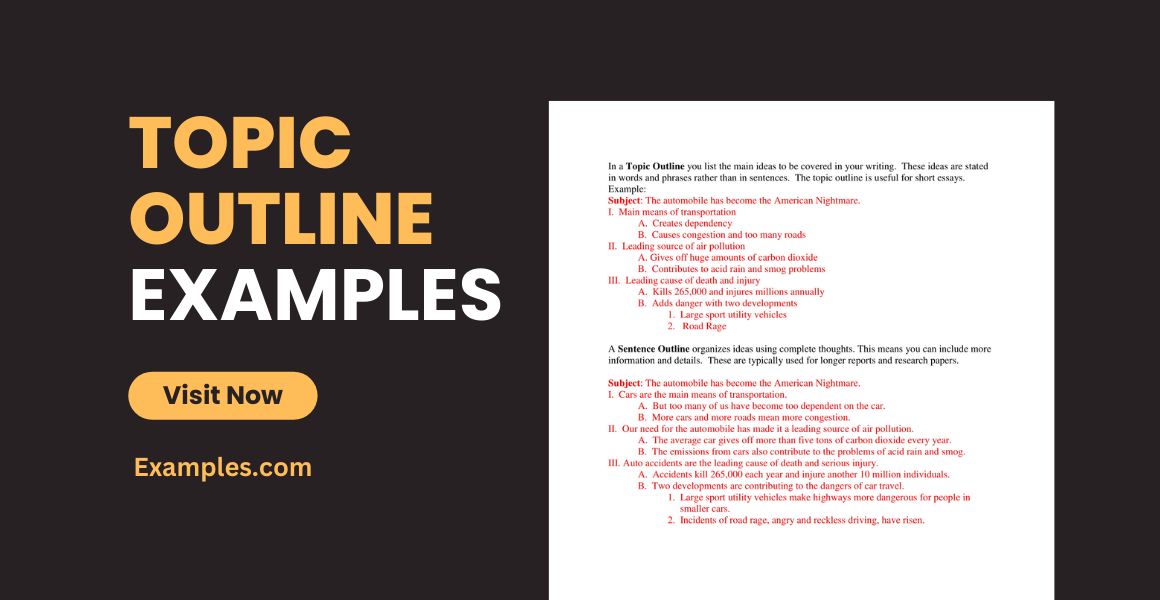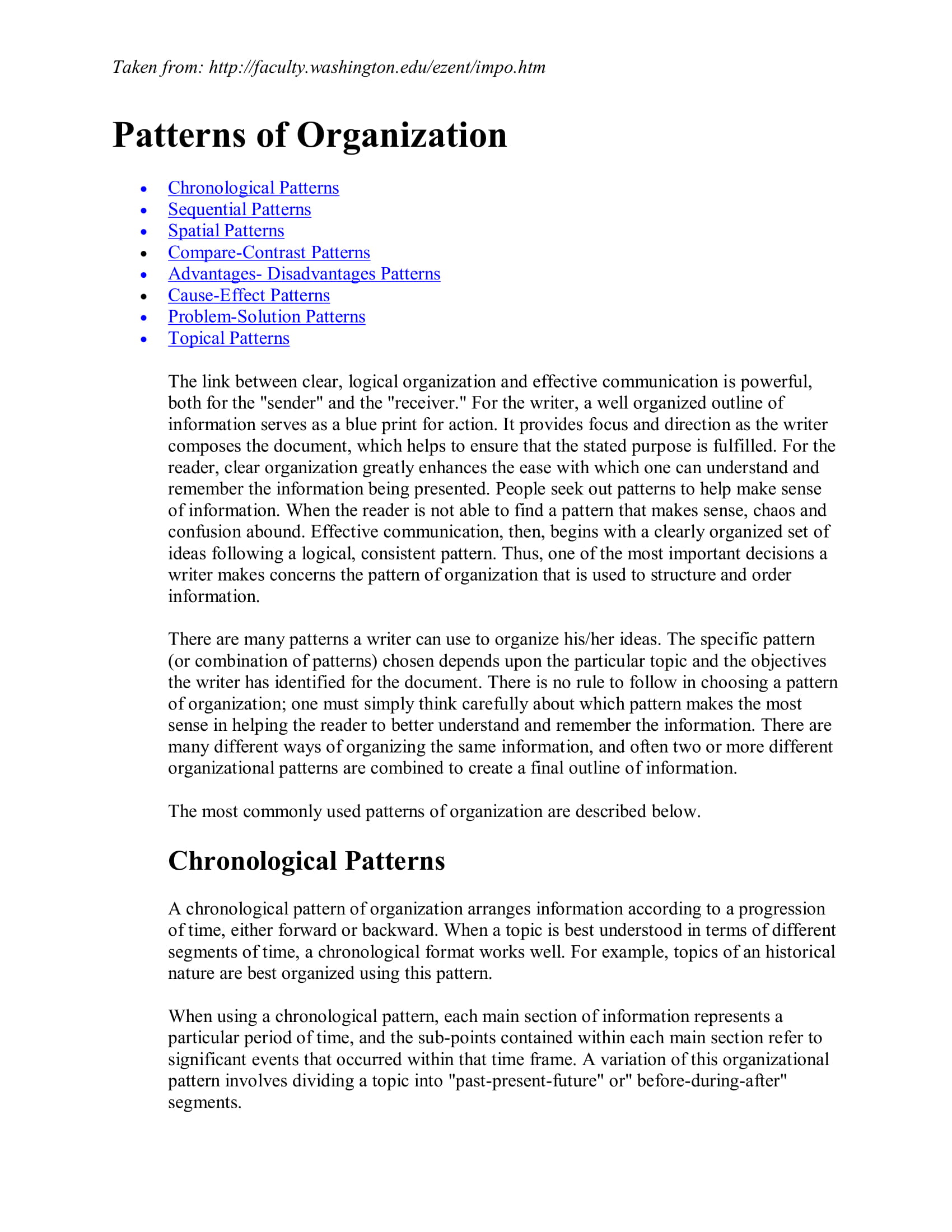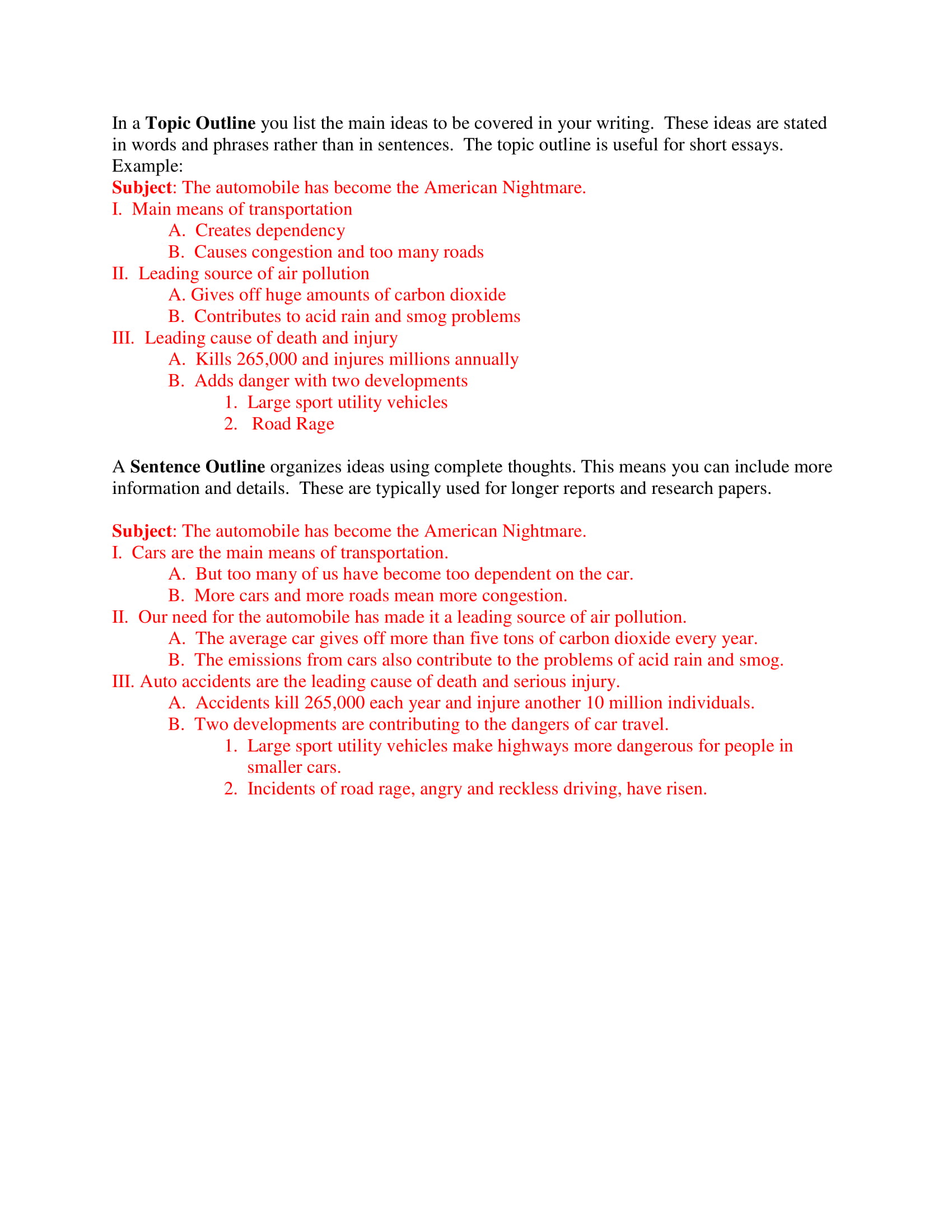How to Write a Topic Outline?
The art of writing is a tedious experience. It demands your undivided time, maximum effort and a heavy dose of creativity. Be it writing a novel or just a writing an academic essay, writing will always be a tough task. Sometimes, it gets so boring because of its repetitiveness. But the unmatched feeling of finishing the material you were writing is simply undeniable, especially when you read through the material and you’re just in awe of how you came up with it. You may also see essay outline.
The feeling of being inspired by a certain idea, person or place is a great start into writing. But achieving the continuity and coherence of that is hard. You get frustrated when somehow along the way you start to lose your flow of thought. And even more frustrating when you get a good feel about what you have written but when read it it’s completely off topic. You may also see program outline.
So now the question is, how do you make your writing experience easier for you? What can you do to help you follow your flow of thought and finish your material faster than the usual? Also see How to Write a Summary
The answer to your misery is an outline.
What is a Topic Outline?
An outline is essentially the blueprint or map of your paper. It helps you organize your thoughts to make it easier for you to translate it in your paper. There are two main types of outline: topic and sentence outline. Both display a hierarchical order of thoughts and ideas. You may also see Examples of Writing a Chapter Outline
A sentence outline requires full sentences to be written under each topic. It expresses the complete and specific idea for each section under a topic. If done thoroughly and correctly, it represents almost as a first draft of your paper.
On the other hand, a topic outline hierarchically arranges the sequence of the main and sub-points. As the name implies, it identifies the topic you need to discuss in your paper. However, topic outlines don’t need full sentences as it is just a list of the of words or phrases that best describes the topic. You may also see speech outline.
A topic outline serves as a quick overview of the topics included in your paper. A basic example would be a college syllabus or the glossary of a book. Both are an equivalent of a topic outline with every main topic and sub-topic listed for a quicker perusal of information and details. Also see Essay Examples
How to Write a Topic Outline
As outlines are mostly used in essays and research papers or any writing material in general, here are a few steps that will guide you into an effective topic outline.
1. Write the main topic or thesis
This is the main subject you need to breakdown and discuss in your paper. It serves as the premise that needs to be maintained or proven. Your details revolve around the thesis of your paper. The thesis should be complete, declarative sentences to help you pick whether to approve or disprove your thesis statement. You may also see tentative outline.
2. Identify the main points to prove your thesis
Make a list of the points that you think will prove your thesis. Write something the reader would agree with regarding your thesis. These points will be the main sections of your paper. They are the claims that you think help prove or disprove your thesis. You may also see thesis outline.
3. Write the sub-points
The sub-points support your main points. They help further explain the main points you have claimed to help with your thesis. Sub-points are additional details that help make your main points coherent with the thesis of your paper. Also see Thesis Introduction Examples
4. Conclude your paper
The conclusion of your outline sums up the main and sub-points of your paper. In a topic outline, write the keywords that best summarizes your paper.
When writing a topic outline, remember that it should just consist of words or phrases as it is just a quick overview of what you should write about. When you want to use complete, declarative sentences in your outline you should use a sentence outline instead. You may also see presentation outline.
Outline Patterns
A topic outline can be written in different patterns, each pattern serves a different purpose. These patterns help with how you can organize your outline. Here a few examples of these patterns:
1. Chronological
A chronological pattern of organization arranges information according to a progression of time. It can be arranged in either a forward or backward progression. A chronological pattern works well when a subject is most understandable in terms of different segments of time. For example, history can be best understood in a chronological order of events. Also see Common Essay Mistakes
2. Sequential
When you want to explain a specific process that follows a particular order of steps, a sequential patters works best. A sequential pattern arranges the data according to a step-by-step sequence that is included in a particular process. The main section of the pattern is followed by a main step that follows the process. A perfect example for this would be a step-by-step guide on how to plant and care for rice plants and/or cooking guides.
3. Spatial
In this pattern, information are arranged according to how things fit together in physical space. For example where one thing is located in relation to another. Spatial pattern works well when you want the reader to have a visual of different parts of a certain location. Creating a tour manual or guide is a good example of using a spatial pattern of organization. Also see Samples of Formal Essays
4. Compare-Contrast
As the name suggests, compare-contrast pattern arranges information according to how two or more things are similar or different from each other and/or both. It can shed an insight as to how a certain topic is similar or different from another. A good example would be articles that help readers decide whether to buy the iPhone X or Samsung S8. You may also see rough outline.
5. Advantage-Disadvantage
This pattern weighs in the pros and cons of a certain topic. It divides the good and the bad aspects of the topic. It is most effective when you want to objectively discuss about a certain topic without trying to sound persuasive. You may also see Research Agenda Examples
6. Cause-Effect
To show the different causes and effects of various situations, a cause-effect pattern works well. When writing a persuasive paper advocating how to solve a problem, this pattern demonstrates the important relationships between different variables. There are two major takes to this pattern; (1) dividing the outline into two major sections (causes and effects); or (2) dividing the outline according to the different causes, with the effects of each cause contained within the larger “causes” section. You may also see report outline.
7. Problem-Solution
The information is divided into two parts, one that describes the problem and one that describes a solution. The general purpose of this pattern is to persuade readers to support a certain course of action. The main goal of this pattern is to change the readers opinion about a topic. You may also see course outline.
8. Topical
A topical pattern arranges information according to the main topic and its sub-topics, or the “types” of things that fall into a larger category. Each main section of information in this pattern is represented by a sub-topic or “type”.
Organization Pattern For Outlines Example
Topic Outline Example
Takeaways
Topic outline is easier compared to sentence outlines. In a topic outline, a phrase or words the best represents the idea will do. It can be used when writing an easy or when you are still figuring out what’s the best topic to write about in your research paper. You may also see book outline.
It is a time-saving tool that will help you with that shows you whether your essay will flow logically and if the details you have gathered relevant to your topic. It will guide the direction of your paper and keep your flow of thought intact.A topic outline is a very useful device to help you organize your ideas without the need of reading through an entire sheet of data. It is easy to go through since it only consists of keywords and phrases rather complete sentences.
Also, the wording in each within each section of your topic outline must be parallel with each other. Meaning the words you have to use or the thought process of each section must coincide with each other in order to form one single thought.
Finally, as any other outline, main topics should be indicated with Roman Numerals and each main topic and sub-topic cannot be divided into one part. In order to fully explain the thesis of your paper there must be an ample amount of supporting details. Therefore, if there is a “1” in your main topic there must also be a “2;” and if there is an “A” in your sub-topic, there must also be a “B” in order to thoroughly go through and fully capture the essence of the main topic.




